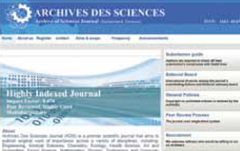Journal hijackers target science and open access
Hijacking of journal websites is a worrying side product of scholarly communication moving online and a topic that Iran-based journalist and researcher Mehrdad Jalalian is particularly concerned about. We asked him about the problem and how researchers and others can address the issue

What are hijacked journals?
Academic researchers need to publish the results of their research in scientific journals to graduate or to advance their careers. Around two years ago, a new line of misconduct emerged in the world of academic publishing: hijacked journals. In this phenomenon, cyber criminals create counterfeit websites for legitimate journals, broadcast call-for-paper spams, and attack the reputation and scientific life of the researchers by publishing their unreviewed articles on fake journal websites and stealing their money.
What problems do they cause?
The problems caused by hijacked journals are not limited to stealing authors’ money. I have received many emails from authors who have published their work with fake websites. They share their anxiety and psychological stresses as they feel their academic reputations are ruined and they lose their motivation for their scientific research.
The legitimate journals that have been hijacked may also lose authors, readers, and reputation. When a researcher performs a literature review, articles published on fake websites of hijacked journals will appear in the search results. The unreviewed findings of articles in hijacked journals might be a basis for new hypotheses and research too, meaning that hijacked journals attack the reliability and validity of both published research and potential future research.
Also, new articles that are published in peer-reviewed journals could cite articles that are published in fake websites of hijacked journals. Such citations would damage the credibility and usefulness of research metrics based on citations.
How you identify hijacked journals?
I began receiving reports from academic researchers by email or orally in workshops in early 2012 about some journals that had impact factors assigned by Thomson Reuters’ Journal Citation Report (JCR) but accepted all articles in any field of science if the authors paid them a publication fee of a few hundred dollars.
These reports suggested something was wrong so I checked the content of the websites of the journals, examined the acceptance letters, and the journal templates. For one of the journals, Archives des Sciences, I found a second website that had been registered a few weeks before my investigation. Contacting the legitimate journal confirmed that this second website was an attack by cybercriminals.
By identifying and reporting the first journals to be hijacked – Archives des Sciences, Wulfenia, and Texas Journal of Science, I unofficially introduced a new term to the academic world: ‘hijacked journal’.
I have since found many more hijacked journals with which to study the issue. My 2014 paper in Walailak Journal of Science and Technology describes how hijacked journals target their victims, their methods, and how to avoid them.
What can authors, readers, publishers, and others do about hijacked journals?
Logistically, it is impossible to teach all readers about techniques for detecting hijacked journals and finding out whether the article they read is downloaded from a fake or authentic website. However, I have some short-term and long-term recommendations. The most applicable short-term recommendation is to warn the academics on the lists of the hijacked journals; and that is what I spend much of my time doing.
I have also developed and published a ‘Hijacked Journal List’ on my website. The first edition was published in June 2014 and consisted of 19 hijacked journals. However, the number of hijacked journals is growing fast; I identified more than 20 new hijacked journals in July, which gives an idea of how serious the problem is.
A second short to mid-term measure could be organising workshops and seminars on how to detect and avoid hijacked journals and fake publishers. Indexing databases such as the products of Thomson Reuters, Scopus, Index Copernicus, and Pubmed/Medine should keep the information in their databases up-to-date, and provide a valid link to the authentic websites.
Finally, my suggestion for a long-term measure is to design a qualitative method to assess the quality of research and publication rather than metrics products.
Mehrdad Jalalian is an Iran-based researcher in publication ethics, journalism, and research methods. He is also a physician and editor in chief of the open-access medical journal Electronic Physician






